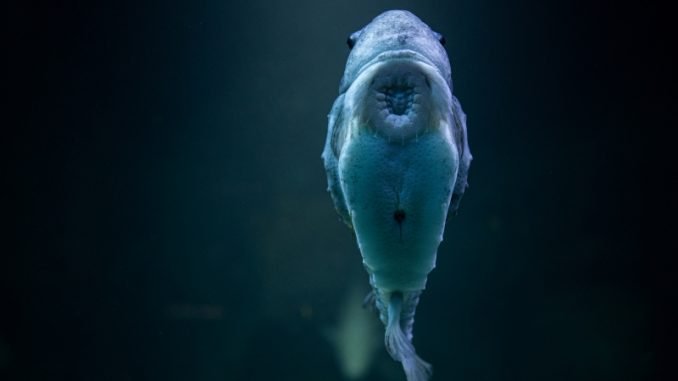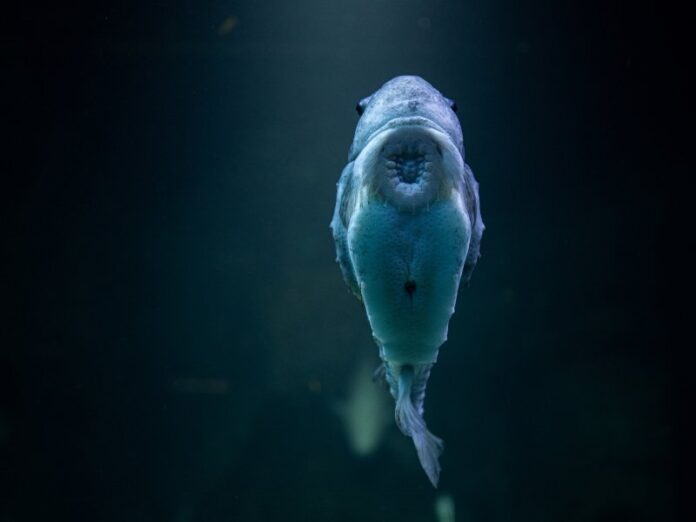
Can fish eat it? It's a question many aquarium fans have about caring for these curious creatures. Sucker fish are beautiful and fascinating aquatic creatures that can come in all shapes and sizes. However, really So what do they eat as part of their meal plan? To submit this blog We will reveal the types of sucking fish that can be found. Look at their feeding habits. and give advice on how to care for them most interestingly. So you can be sure that your pet will be healthy and happy. So in case you are asking, “Can fish suck?” keep your answer hidden – everything is often revealed.
list of contents:
What do fish eat?
Suckers, also known as algae eaters, are a form of freshwater fish that feed on algae and completely different particles found in their pristine habitat. They come in many breeds and sizes. Therefore, you need to understand what they need to survive optimally.
Pure Weight Loss Plan:
Suckers are omnivores and may eat all kinds of plants and small animals similar to worms or insects. Throughout the wild, they often eat aquatic plants such as moss or seaweed. including debris (pure, decaying water sources) from beneath our water sources They may also scavenge for food supplies similar to insect larvae or eggs that are left behind by various organisms living in their environment.
Industrial meals:
For these sucking fish kept at home There is a wide selection of financial diets designed specifically for them. These consist of flakes or pellets made from high quality parts which are present important nutritional vitamins which are essential for improving and enhancing performance. Some manufacturers even offer freeze-dried products which may be reused earlier than feeding time. It is very important to carefully teach the label when deciding on a food product to ensure that you are providing your pet with an appropriate diet plan.
In the case of feeding habits Sucking fish must be fed 2 times a day with enough food that can be consumed within 5 minutes each time. They must be kept away from the tank immediately after feeding. These fish also choose a gradual transfer of water currents, so once you purchase an aquarium filter, Make sure the filter isn't too powerful. In some cases, your pet won't be able to find food alone. Finally, keep an eye on the clamp for any indications of overfeeding. It is similar to cloudy water made from uneaten pieces floating in a spherical shape. This means that you may be feeding large quantities.
Important points: Sucking fish are omnivores and require a balanced diet of all plants and small animals similar to worms or insects. Industrial foods designed for them must be selected strictly. By preparing enough food to consume within 5 minutes at a time. Check the tank for indicators of overfeeding, which resemble cloudy water caused by uneaten spherical debris.
Care and repair of sucking fish
In the case of caring for sucking fish The tank setup and filtration are two components that are really highly effective. The size of the tank must be acceptable for the species you are choosing. A 10 gallon tank will work well with one or two small species similar to bristlenose plecos. A larger tank may be necessary if you intend to collect specimens. large numbers or larger species An essential filtration system will help keep your water clear and healthy. So make sure to choose a system that meets your needs. Canister filters are suitable for large tanks. Hanging filters, on the other hand, will work properly in small setups.
Water parameters are also very important in keeping sucker fish happy and healthy. These fish choose easily acidic water that is between 72°F and 82°F (22°C – 28°C). Frequent partial water changes must be performed weekly using chlorine-free tap water. or aging aquarium water that has an appropriate pH level (6 – 7), checking the kit may help ensure that the total range is consistent at all times.
Finally, when deciding on a tank mate to be your sucker fish. Look for fish that live in completely different, calmer seabeds, such as Corydoras catfish or Otocinclus catfish, that cannot compete with them for food or a home in the aquarium. Avoid aggressive species such as cichlids, which can only bully these delicate creatures into submission. With proper care and maintenance Your sucker fish will thrive in its new home.
Different types of sucking fish
They are popular among aquarists as a result of their peaceful nature and easy care.
Widespread species:
There are many types of suckers available for home aquariums, along with the ubiquitous pleco (Hypostomus plecostomus), bristlenose pleco (Ancistrus sp.), clown pleco (Panaque maccus), and lip pleco (Chaetostoma formosae). They vary in size from 2 inches to 12 inches when fully grown.
Measurements and shade changes:
Depending on the species, suckers can vary in color from brown to green to blue. Some species have stripes or spots. While some species may be dark in color. Ready measurements by age and type Some species can reach sizes up to 12 inches, while others are relatively small, spherical to around 4-5 inches when fully grown.
The standard lifespan of many forms of suckers is between 5-10 years with proper care. It's similar to changing the water frequently. Acceptable closet friends and passable filtration. However, there are situations where they live for more than 10 years if the environment is suitable.
Feeding habits of sucking fish
Weight loss plan requirements:
Fish eat everything. This means that they will eat all kinds of plants and animals. Their diet throughout the forest consists of algae. Small invertebrates that are similar to worms and insects. and completely different pure particles. In captivity, they should be fed a variety of meals along with high-quality flakes or pellets designed for coccyx feeders. Together with live or frozen food such as bloodworms or brine shrimp. Greens similar to zucchini pieces are offered as an additional aid in weight loss.
Feeding frequency:
Suckers need to be fed two meals a day in small quantities, which can be consumed within a few minutes. Overfeeding is not really beneficial. This is because it can lead to water quality issues as a result of uneaten food decomposing within the tank. The most interesting thing is to remove uneaten food after a few minutes so as not to contaminate the water.
When feeding suckling fish You will need to consider their intrinsic habit of sucking food from the surface rather than consuming it from the ground like other fish species. to support this habit Sunken pellets or wafers must be used instead of floating ones. This is to avoid being pushed away by the water flow created by the filter or pump faster than your fish can eat it.
Caring for sucking fish
When caring for sucking fish You will need to understand the requirements for aquarium setup and maintenance. The tank must be at least 20 gallons in size with a filtration system. They also need lots of hiding space, such as rocks, driftwood, or vegetation. Water quality and temperature are important for these fish. Water must be kept clear and at a temperature between 22-26°C (72-78°F).
Compatibility with completely different fish is a different and important situation in keeping suckers. They are usually rescued by peaceful species such as tetras, rasboras, barbs, gouramis, catfish, corydoras, loaches, and danios. Avoid aggressive species such as oscars or large cichlids that can be bullied or eaten. If they are small enough
Providing your sucker with the right diet plan is very important. They are omnivores. Therefore, feed them a variety of meals along with habitat foods similar to bloodworms and brine shrimp. and frozen foods such as tubifex worms and frozen krill/shrimp/bloodworms Give two meals in certain situations every day in small quantities which can be consumed within 2 minutes each time. Specific points should be taken into account when feeding these fish. They should not be overfed as this can lead to a point of failure as a result of a poor water quality situation caused by uneaten and decaying food within the aquarium environment.
Conclusion
In summary, can fish suck and eat it? Positively, they do. Fish are omnivores and may eat a wide variety of foods. They usually feed on living food that is similar to worms, insects, and crustaceans. or prepared frozen food Feeding the right type of food is very important to stay healthy and happy. Proper care and maintenance can be vital to keeping your sucker fish healthy and thriving. with appropriate details regarding proper feeding and care habits You may benefit from having these amazing creatures in your aquarium for many years to come again.
Do you want to know what your sucker fish desires for a healthy and happy life? The world of fish farming There are options! We provide important information about diet plans, housing, water situations, tank mates, and more. Join us now as we discover strategies for creating a great environment for your residents. These outstanding aquariums so that they can thrive in their new home With our expertise and advice You can rest assured that your pet fish will get all the weight loss plans they need from their food sources. Let's work together to make sure every sucker is well cared for. Come join us now!

